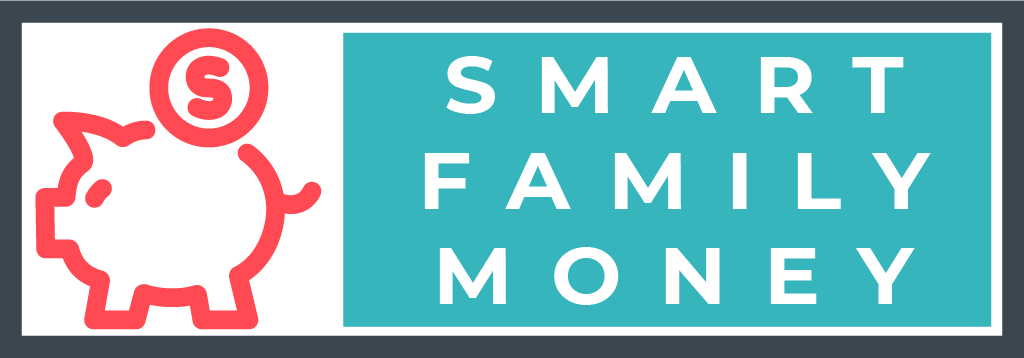DISCLOSURE: This post may contain affiliate links, meaning when you click the links and make a purchase, we receive a commission. Also an Amazon Associate, I earn from qualifying purchases. DISCLAIMER: The information and opinions within this content are for information purposes only. Guidance is based on personal interpretations and in no way, represents legal or financial advice. For more information, read my disclosure policy.
Have you ever looked at the year-to-date earnings on your paycheck or yearly W-2 and wondered, “I made HOW MUCH last year?! Where in the world did all the money go?!”
Usually, the people who are most shocked by the numbers are the ones who feel that they’re not living extravagantly. They wonder how they could have spent so much when they’re not buying fancy shoes or taking any vacations.
If you’re feeling confused about where your money went, you’re not alone. Many people ask themselves these questions.

Where Does Your Money Go?
So, how do you find the answers? Where DID all that money go? Let’s find out.
In the first step, we looked at your why and you were encouraged to be emotional and passionate. For this next step in the process, try to be as objective and as unemotional as possible. There are often many emotions wrapped up in our spending and that can get in the way of positive changes.
Imagine yourself as a logical, methodical detective trying to decipher the mystery. You’re sifting through the clues to find the answers.
A detective wouldn’t get upset about finding a fingerprint and you shouldn’t allow yourself to get upset when you discover just how much you spent at Ulta Beauty last month. It’s just a clue that will help you answer some questions.

Gather Your Data
The first step to figuring out where your money went is to gather as much data as possible. You need a list of transactions that you’ve made. Ideally, you want to gather 3 months of transaction history.
It’s also best if none of those months were too far out of the ordinary. For example, don’t include a month you took a vacation or December if you spent a large amount on Christmas.
Where to Find Your Transaction History
Bank or credit card statements
If you mainly use a credit or debit card for your spending then bank or credit card statements should have everything you need. You can view them online or use paper statements.
Most online banking also will allow you to download your transaction history into a spreadsheet. This can be the best way to get the data you need.
Mint.com
If you mainly use credit or debit, you can use the tools on mint.com to download and automatically categorize your transaction history. You will need to manually change categories on some transactions, but it can be a quick and easy way to get started.
While I think mint.com is a great tool for examining your past transactions, I do not recommend it as a long term budgeting tool. See my comparison of YNAB vs. Mint vs. Every Dollar to learn more.
Receipts
If you save receipts, these may be a good source of spending history for you. If you do most of your spending in cash, this may be your only option for finding some transaction history.
Manual recreate your spending
If you mainly spend in cash, you may need to manually recreate your spending history. You can use a calendar to try to recreate where you went and what you spent.

Classify Transactions
Once you have your list of transactions for three months, it’s time to classify the transactions into categories.
The categories you choose can be whatever you want them to be. Everyone’s spending is a bit different so everyone’s categories are a little different.
For this exercise, just choose some very basic, broad categories that make sense to you for your spending. Try to keep it to 10-15 categories. Here’s an example of what someone’s broad spending categories might look like:
Example Broad Spending Categories
- Groceries
- Restaurants
- Monthly Bills
- Housing
- Transportation
- Debt
- Clothing
- Entertainment
- Kids’ Expenses
- Pet expenses
- Medical
You may even want to have even broader categories for things that are difficult to classify. For example, you may want a “Target Shopping” category because those transactions may include such a mix of things (clothing, food, household items, pet items, etc) that they’re hard to classify retroactively (when you can’t really remember what you bought).
As you’re working through this, don’t stress about it being perfect. You’re just trying to get an overview of your spending patterns. It’s not critical that every single item is classified perfectly. Do a reasonably good job and move on.
Look for Patterns
After you are done classifying your 3 months of transactions, do these things:
- Add up the totals in each category for each month.
- Take an average of how much you usually spending in each category (throw out any excessive high or low months)
- Rank your spending categories from biggest to smallest.

What Stands Out?
Does Your Spending Align With Your Priorities?
Do you remember that dream you have that we talked about in step one? Is that reflected in your spending categories? If not, what do you think is getting in the way?
Do you see anything that needs to change? If you had a moment during this exercise where you said, “Holy cow, I spent HOW MUCH on that?!” just hang in there. It’s not time to try to make cuts to your spending yet.
We’re just trying to figure out what’s going on. You can notice the patterns now, but try to hold off on freaking out!
What’s Next?
After you have your history of spending, you can use those for a starting point for making a budget. We’ll discuss that more in the next post in this series.
